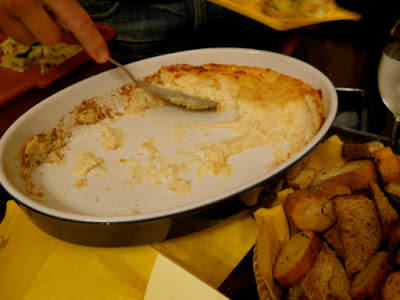This volume is definitely for the food lover and for anyone who would like to discover more about this amazing cuisine. At more than 600 pages, it is a comprehensive tome that took her six years to research and write and covers the history and cultural development of Spanish cooking, tracing recipes back to their origins whether Roman, Moor, Jewish, English or French, to name a few influences. Pages of descriptions about how dishes came into being are followed by gorgeous photos and lots of recipes and cooking tips.
I could just curl up on the couch to take some “me time” to leaf through these pages, dreaming of Spanish shores and going from place to place in search of delicious food. Fortunately, I didn’t have to pack a suitcase to do that, yet. One great aspect of events held by the Culinary Historians of New York is that the programming committee members cook sample dishes from the publication being discussed on that evening. Wonderful plates of sweet and savory tapas were served alongside wines from the region. The Queen Sofia Spanish Institute was a warm and gracious host, allowing us to spill out onto their terrace to enjoy a taste of Spain in New York.
Brandada de Bacalao (creamed salt cod) – Catalonia
Coca de Cebes (onion tart) – Valencia
Tortilla de patatas (potato omelet)
Salsa de Romesco (almond, dried pepper, and tomato sauce) – Catalonia
Serrano Ham and Empanadillas de Atun y Pimiento (little pies with tomato, pepper, and tuna filling) – Valencia and Majorca
Manchego Cheese, Marcona Almonds, and Membrillo (Quince Paste Cubes)
Naranjas al Vino De Malaga (oranges in sweet malaga wine) – Andalusia
Marquesas (almond cakes) – Castille
Hand-carved Jamón Serrano (Serrano Ham)
Buon appetito!
**Affiliate Disclosure**
As an Amazon Associate, I earn from qualifying purchases via links that are included in this post. These earnings enable me to continue to maintain this website.












No comments:
Post a Comment